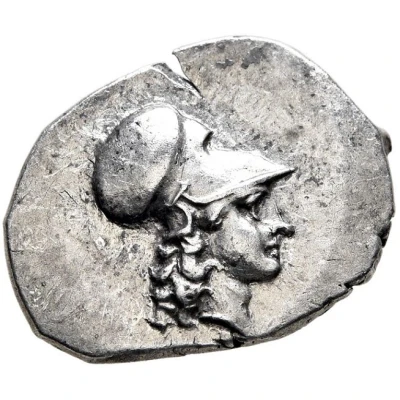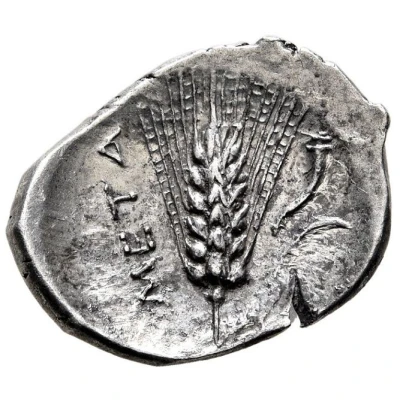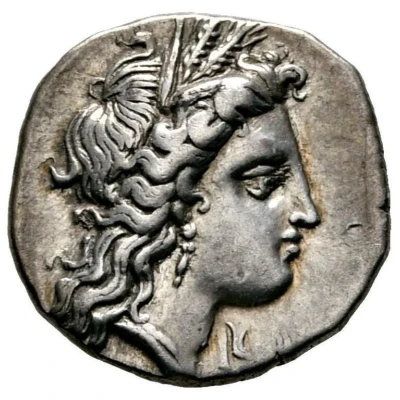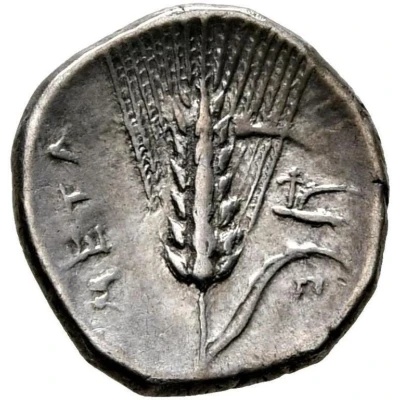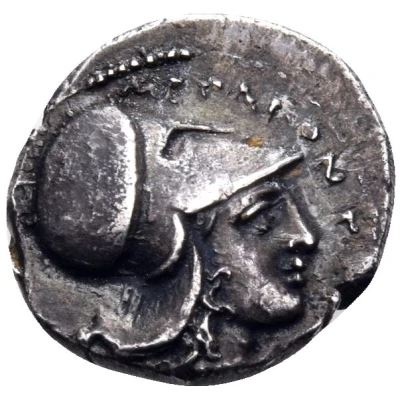
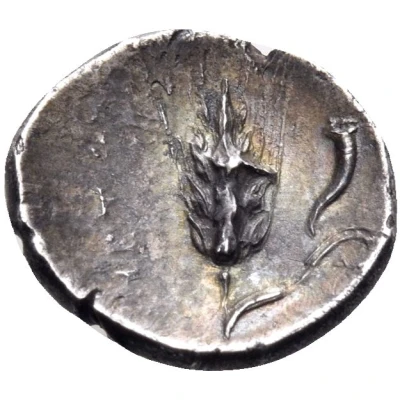

© Nomos AG
Diobol 325 BC - 275 BC
| Silver | 1.19 g | 12 mm |
| Issuer | Metapontion (Lucania) |
|---|---|
| Type | Standard circulation coin |
| Years | 325 BC - 275 BC |
| Value | Diobol (⅓) |
| Currency | Drachm (540-200BC) |
| Composition | Silver |
| Weight | 1.19 g |
| Diameter | 12 mm |
| Shape | Round (irregular) |
| Technique | Hammered |
| Orientation | Variable alignment ↺ |
| Demonetized | Yes |
| Updated | 2024-10-10 |
| Numista | N#403895 |
|---|---|
| Rarity index | 100% |
Reverse
Grain ear with leaf to right; above leaf, cornucopia; below leaf, Δ.
Script: Greek
Lettering: META
Comment
Johnston F22.
Interesting fact
The Diobol coin was used as a form of currency in the ancient Greek city of Metapontion, which was located in the region of Lucania (now Basilicata) in southern Italy. Despite its small weight of 1.19 grams, the Diobol was a significant coin in its time and was used for everyday transactions. Its design featured the image of a bull, which was a symbol of strength and prosperity in ancient Greek culture. The Diobol coin was also unique in that it was made of silver, which was a valuable and sought-after metal at the time. Overall, the Diobol coin is an interesting piece of history that provides insight into the economic and cultural practices of ancient Greece.
